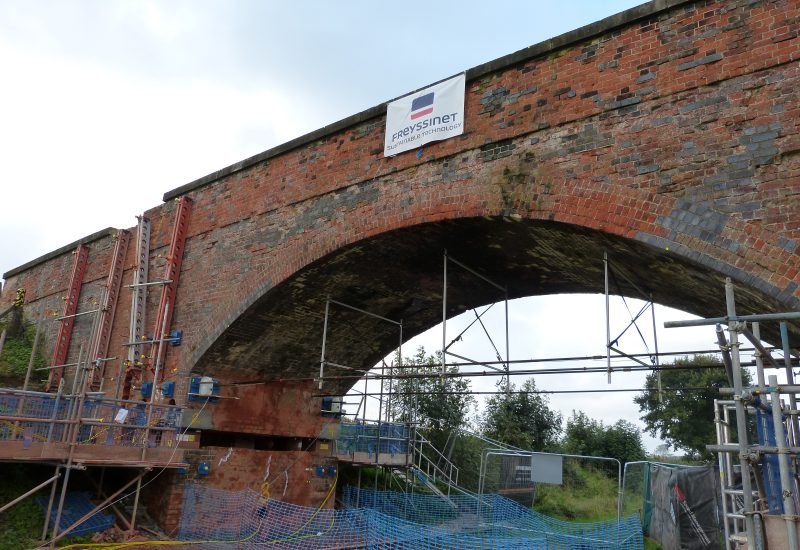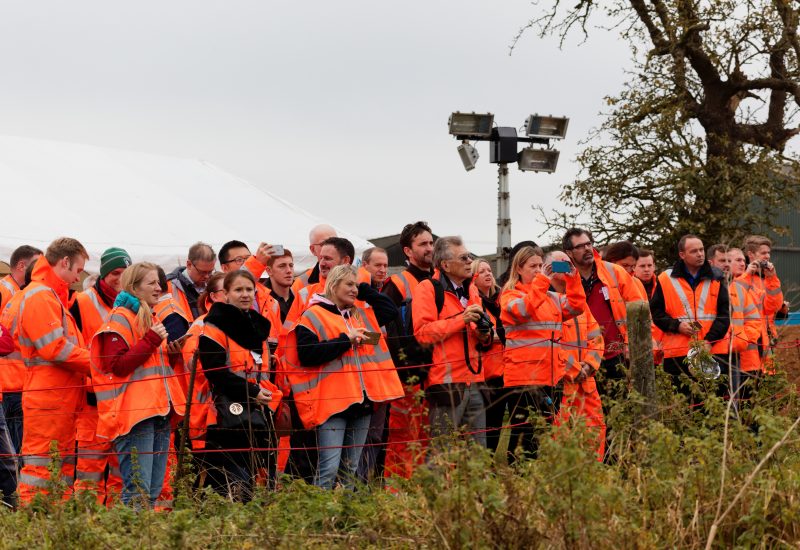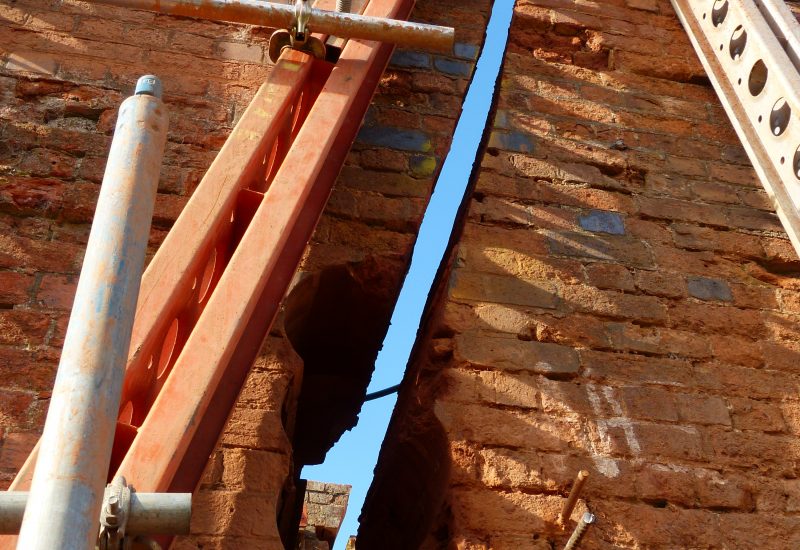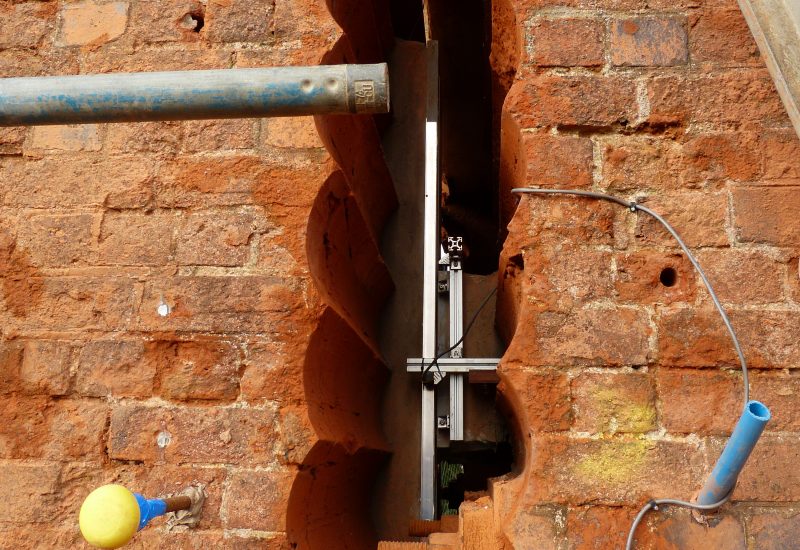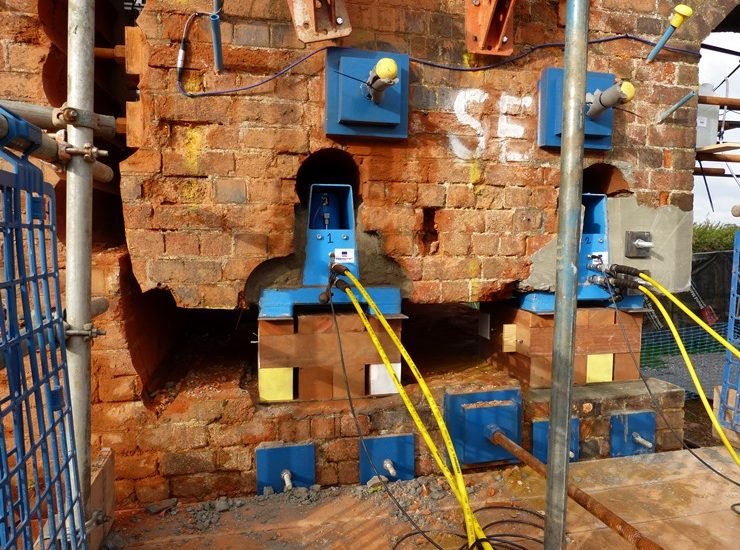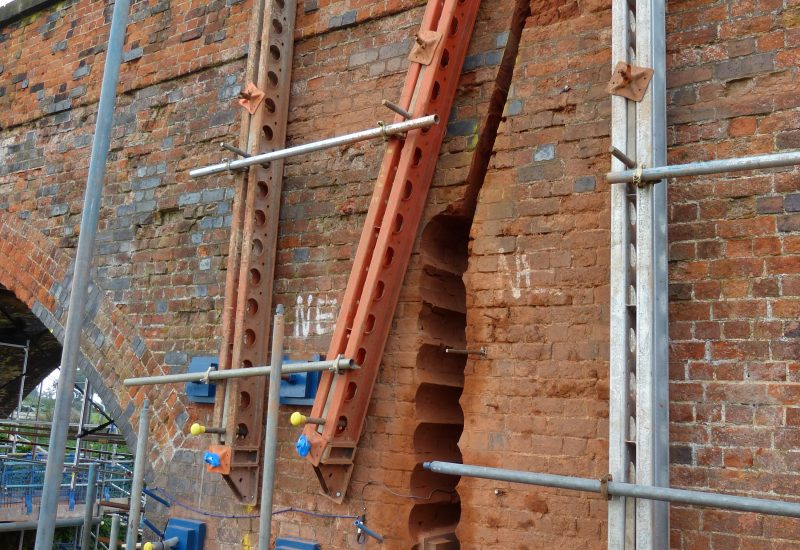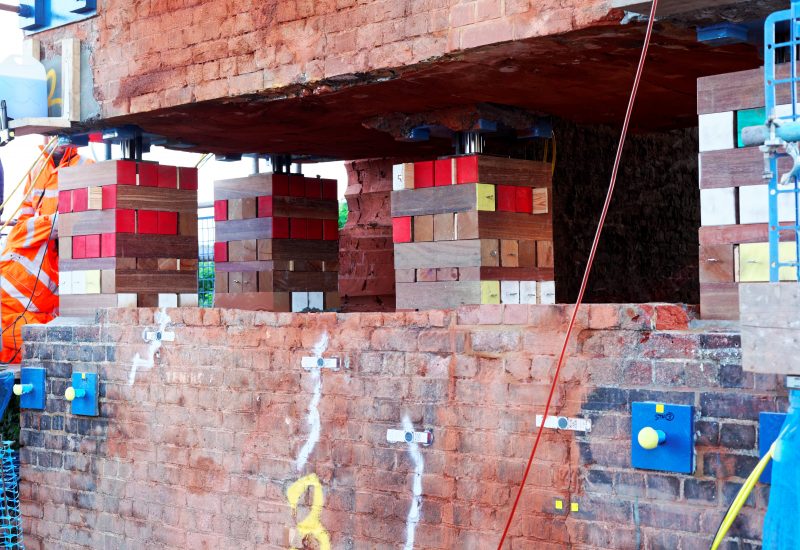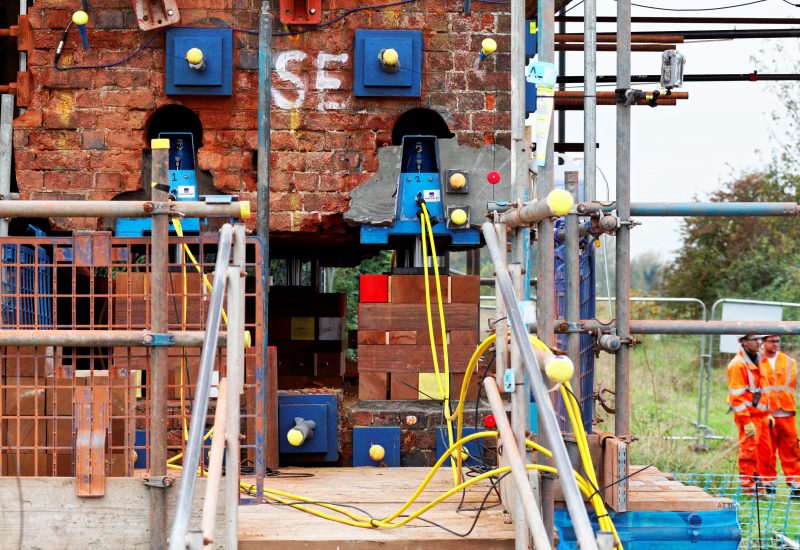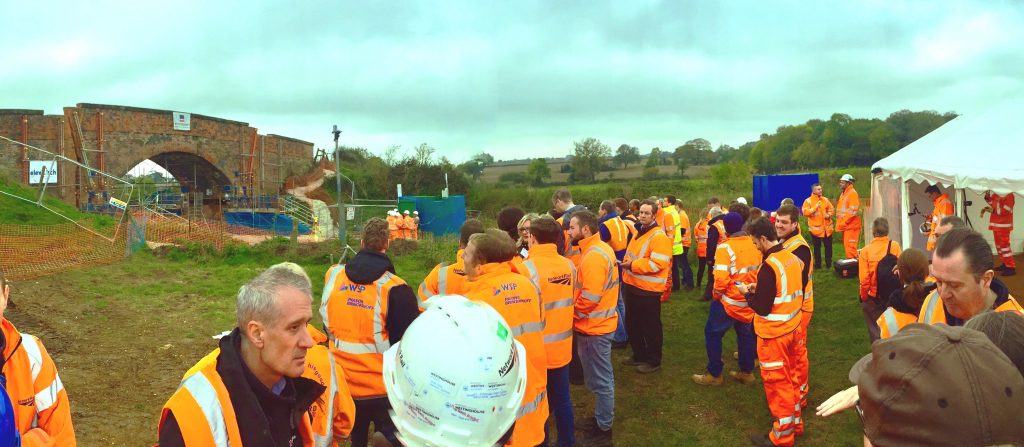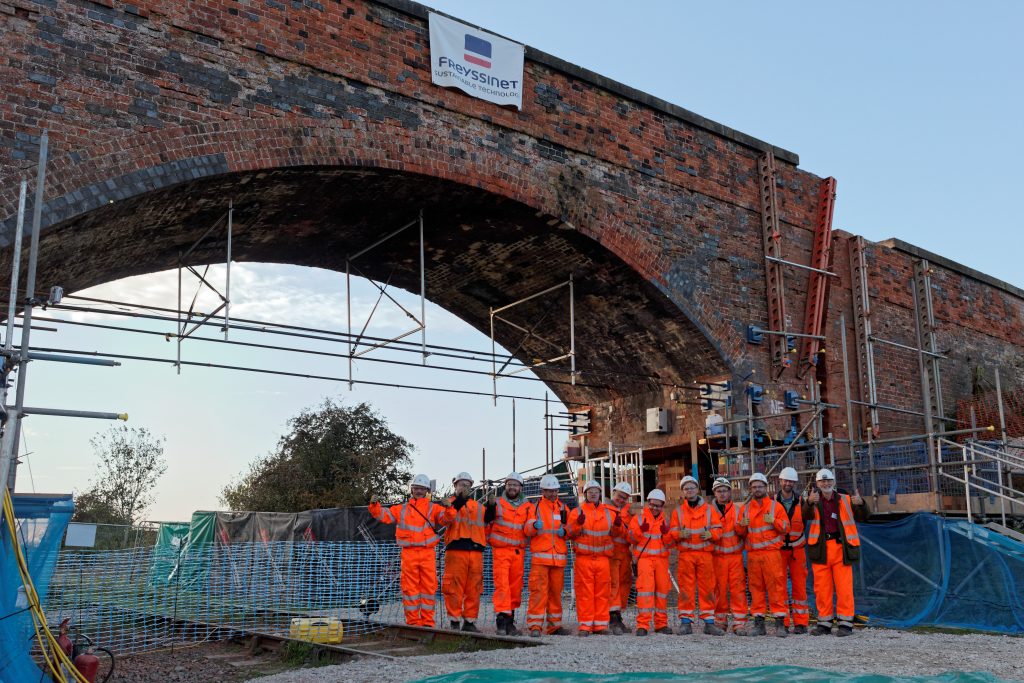Freyssinet successfully completed the world’s first ElevArch® masonry bridge arch lift on Wednesday 26 October.
Over 100 guests from the rail sector, including Network Rail, Aktins, Arup, Arcadis, DfT and J. Murphy Group were on site to witness the ElevArch® lift trial of a 161-year-old, 220 tonne masonry arch bridge in Buckinghamshire.
The success of the lift is a great achievement for the ElevArch® team, headed up by Kevin Bennett, following two years of innovative thinking, hard work and careful planning. Onsite operations have been skilfully led by Chris Meade.
How it began
In 2014, the RSSB Innovation Railway programme, a collaboration between Network Rail and RSSB, invited participants to enter an ‘Avoidance of Bridge Reconstruction’ competition, in an attempt to find an alternative to demolishing overbridges. It’s estimated that 500 masonry arch bridges in the UK are too low for Network Rail’s electrification programme (more height is needed for the overhead line equipment) and therefore a cost effective solution is required.
Joining forces with renowned masonry arch expert Bill Harvey, Freyssinet explored the feasibility of vertically jacking bridge arches. In 2015, their concept ‘ElevArch®’ was chosen along with four others to advance into phase two of the competition – the full-scale demonstrator. A suitable structure was located on the East-West Rail phase 2 route between Bicester and Bletchley – Moco Farm bridge, which carries live farm access over a railway that is currently being recommissioned.
What is ElevArch®?
ElevArch® is a patented technique which involves cutting the arch free from its abutments and wing walls so it can be jacked skywards to enlarge the space below it. The sequence of operations is key to maintaining the all-important thrust line. A horizontal saw cut is made through each abutment, just below the arch springing in conjunction with coring five holes horizontally into each abutment. Vertical lifting jacks are inserted into these holes and they support the weight of the bridge.
The horizontal component of the thrust force is taken by four vertical slip bearings which are inserted into slots cored through the four wing walls. These bearings prevent the arch from spreading horizontally whilst allowing vertical movement. Once they have been grouted in place, it is safe to wire saw cut the rest of the wing walls to free the arch from the foundations and the magic can begin.
The 50 tonne capacity jacks are computer-controlled from a central unit to within 0.1mm of each other, guaranteeing a fully balanced, synchronous lift.
Lift day success
On 26 October, the 220 tonne masonry arch bridge at Moco Farm was jacked 900mm using ten 50 tonne jacks. As the jacks lifted, hardwood timber crib stacks were inserted beneath to support the bridge each time the jack foot retracted. The lift took about six hours, during which constant monitoring verified that the arch was behaving as predicted.
The arch was then lowered by 465mm so that re-profiling of the approach ramps is unnecessary. The bridge will be left 435mm higher than the starting position and the gap in the abutment where the bridge has been lifted will be faced with brickwork and flooded with concrete to restore permanent support.
The future
The methodology has been developed to minimise the intrusion to the rail environment as much as possible. A bridge reconstruction or track lower can often require several days of railway closure. With ElevArch®, in most situations, there will be a Rules of Route possession to erect the trackside safety barrier and another to remove it at the end. The lifting operation will take approximately six hours to complete. Coring, sawing, grouting and other tasks can take place from behind the barrier using relatively light equipment. So, not only are the direct costs of this technique expected to be significantly less than bridge reconstruction or track lowering, but the demands for track time will also be reduced.
The ElevArch® technique is not expected to replace bridge reconstruction or track lowering completely, but rather create a third option when the situation is most appropriate. Ultimately it will provide an effective alternative to overbridge demolition – with approximately 500 overbridges getting in the way of Britain’s electrification programme, the future for this bold but simple technique is expected to be bright.
Collaborate – Innovate – Communicate. Follow @freyssinetrail and @freyssinetUK on Twitter and LinkedIn and share the ElevArch® story. #ElevArch
Contact info@freyssinet.co.uk for more details.


